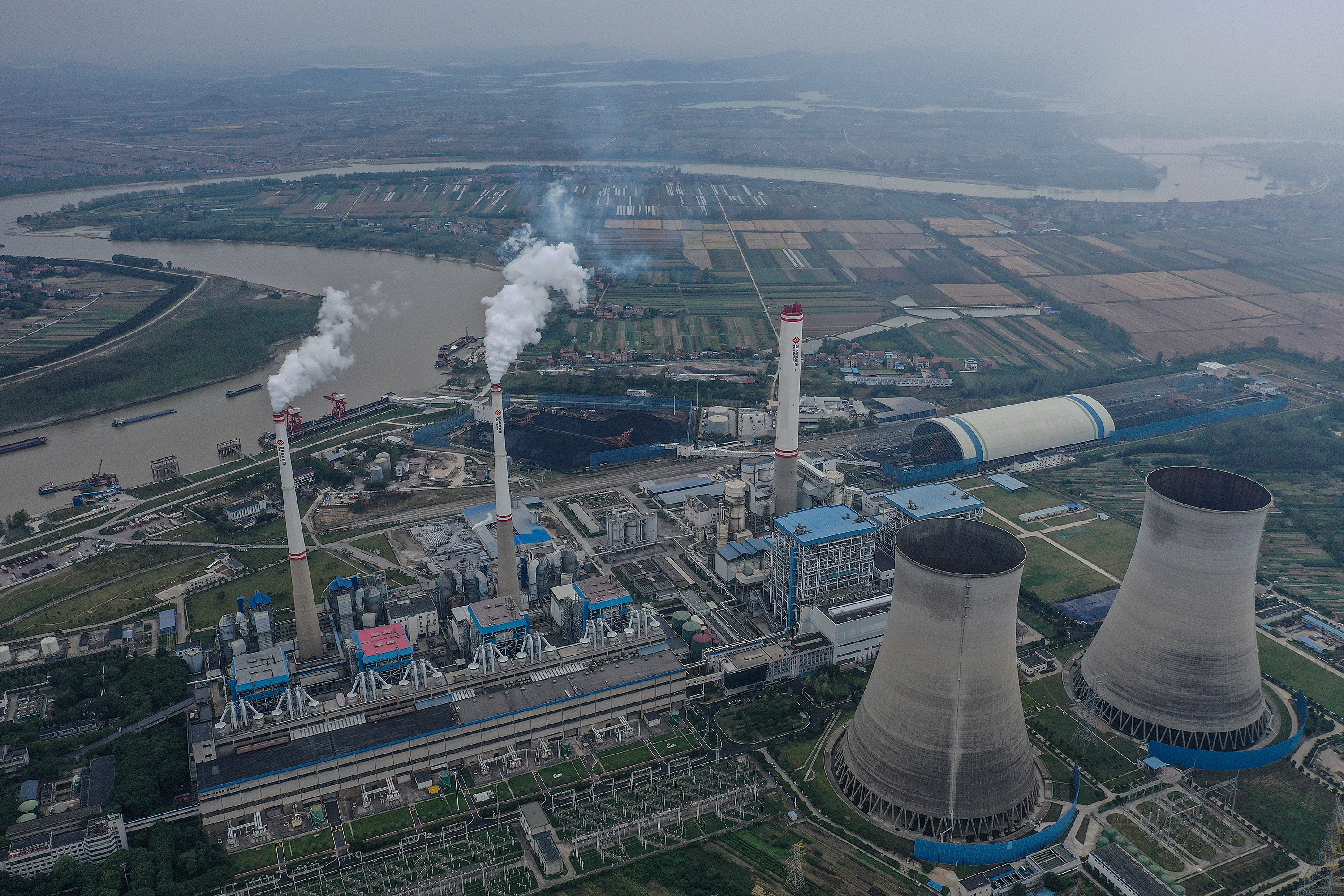World must shut down 3,000 coal plants by 2030 to hit climate target, report says
‘The logical conclusion is that half of the effort will need to come from China,’ study author says

Your support helps us to tell the story
From reproductive rights to climate change to Big Tech, The Independent is on the ground when the story is developing. Whether it's investigating the financials of Elon Musk's pro-Trump PAC or producing our latest documentary, 'The A Word', which shines a light on the American women fighting for reproductive rights, we know how important it is to parse out the facts from the messaging.
At such a critical moment in US history, we need reporters on the ground. Your donation allows us to keep sending journalists to speak to both sides of the story.
The Independent is trusted by Americans across the entire political spectrum. And unlike many other quality news outlets, we choose not to lock Americans out of our reporting and analysis with paywalls. We believe quality journalism should be available to everyone, paid for by those who can afford it.
Your support makes all the difference.The world must shut down nearly 3,000 coal-fired power plants by 2030 for any chance of achieving the most optimistic target of the Paris Climate Agreement of keeping global temperature rise below 1.5°C, a new report has revealed.
Currently, there are over 2,067,713 megawatts (MW) of unabated coal power in operation across the world that work without the use of carbon capture and storage technology, the report, published by the climate think tank TransitionZero, noted.
Each of these units are about 314 MW in size on average. The International Energy Agency has estimated that the global unabated coal capacity should decline to 1,192,000 MW by 2030 for net-zero carbon emissions. So, the report said, this required the shutting down of nearly one coal unit every day.
“This equates to 2,925 coal units, or nearly one unit every day, until 2030, which will need to be retired, retrofitted or converted to meet the 1.5 degree climate target,” said the research, published online days ahead of the UN COP26 climate change summit in Glasgow.
In comparison, experts say the world retired about 319,549 MW of coal plants in total between 2010 and 2020, with each of these units working on average for about 38 years.
There needs to be a more than threefold increase in the amount of coal capacity closed from 2010 to 2020 to meet the 1.5°C target, the report said. With the average age of the world’s existing fleet being close to 22 years, it said that closing assets to meet the 1.5°C target would inevitably require premature closure of coal plants.
This requirement to close a large number of the world’s current coal-powered plants, the report said, puts additional drive for China — the planet’s largest source of greenhouse gas and owner of nearly half of the world’s coal-fuelled plants — to accelerate its adoption of green energy sources.
The country, already a world leader in the production, deployment, and financing of clean energy, connected 72 gigawatts (GW) of wind and 48 GW of solar to the grid last year — equating to a pace of about three large wind turbines and five football fields of solar panels every hour.
“The logical conclusion is that half of the effort will need to come from China,” Matt Gray, TransitionZero analyst and report author, told Reuters.
Mr Gray said a new Chinese government policy that requires all of China’s coal plants to sell their electricity in wholesale markets may prove to be the “final nail in the coffin” for new coal plant investments in China, and may make it possible for the world to align coal electricity with the 1.5°C target.
“Amidst the rumours that President Xi Jinping will not attend COP26, China has quietly implemented a policy with globally significant climate implications,” the report added.
“In short, China is using the energy crisis to accelerate its deregulation agenda, which means their fleet of coal power plants will be subject to market forces,” Mr Gray noted.
Even though the country has managed to reduce the fraction of coal power in its overall energy production capacity from over 70 per cent in 2005 to about 57 per cent in 2020, reports said the absolute volume of coal energy consumption has continued to rise.
However, with new investments in wind and solar becoming cheaper in all major regions, and the cost profile of coal electricity deteriorating, Mr Gray said it was cheaper to build new renewable energy capacity than continue to operate coal plants.
Due to the energy crisis, he said that 64 per cent of coal capacity could cost more to operate than new renewables in 2021, and replacing China’s coal fleet with zero carbon alternatives could save $1.6 trillion.
With continued long-term deflationary trends in renewable technologies and changes in global trade policies, the report says world leaders need to set clear short-term goals to ensure coal units without CCS are phased out by 2030 in advanced economies and globally by 2040.
“Failure to do so will not only risk missing the 1.5 degree target, but also undermine the competitiveness of their economies in the 21st century,” it added.
Join our commenting forum
Join thought-provoking conversations, follow other Independent readers and see their replies
Comments